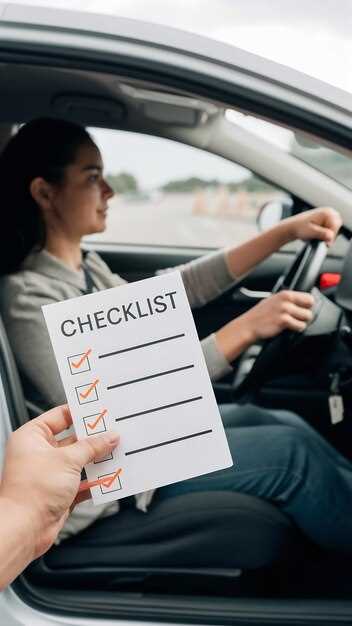
Buying a used bike can be an exhilarating experience, offering not only an affordable option for transportation but also the thrill of discovering the perfect motorcycle or bicycle that fits your needs. However, this excitement should be tempered with caution and due diligence, as not all second-hand vehicles are created equal. To ensure that you make a wise investment, it’s essential to thoroughly assess the condition and history of the bike before finalizing the purchase.
The second-hand bike market is vast, presenting numerous choices from vintage models to modern motorcycles. Each bike carries its own set of potential issues, from mechanical problems to wear and tear that may not be immediately visible. Consequently, having a comprehensive checklist can be a game-changer in identifying the right bike while avoiding potential pitfalls. This guide will provide you with essential factors to consider, helping you navigate through the complexities of buying a used motorcycle or bike.
In this article, we will cover critical aspects, including how to inspect a used bike’s mechanical components, understanding its maintenance history, and evaluating the seller’s credibility. Whether you are a seasoned rider or a newcomer to the world of motorcycles and bikes, this checklist will equip you with the necessary knowledge to make an informed decision and ensure your second-hand purchase is a rewarding one.
Inspecting the Bike’s Condition: Key Areas to Examine

When purchasing a used bike, thorough inspection is crucial to ensure you are making a wise investment. Start by examining the frame for any signs of cracks, dents, or rust. The integrity of the frame is vital for safety and performance.
Next, pay attention to the wheels. Check for any wobbles and ensure that the rims are true. Spin the wheels and listen for any unusual noises that could indicate issues with the hubs or spokes. Inspect the tires for wear and tear, ensuring there is adequate tread depth.
The braking system is another critical area to check. Squeeze the brake levers to feel the responsiveness. Inspect brake pads for wear; they should not be worn down excessively. Look for signs of fluid leaks if the bike is equipped with hydraulic brakes.
Move on to the drivetrain, which includes the chain, gears, and derailleur. Check the chain for rust or stiffness and replace it if necessary. Shift through all gears to ensure smooth transitions and listen for any grinding noises, which could indicate alignment issues.
Lastly, don’t forget to test the saddle and handlebars. Ensure that they are comfortable and at the correct height for your riding style. A proper fit will enhance your riding experience and prevent discomfort.
Creating a comprehensive checklist for these key areas will help you assess the condition of a used bike effectively, ensuring you make an informed decision.
Understanding Documentation: Titles, Registrations, and History

When purchasing a used bike, verifying documentation is crucial for ensuring a legitimate transaction. The first document to check is the title. This serves as proof of ownership and should match the seller’s information. A clear title signifies that the bike is not stolen or encumbered by liens.
Next, look into the bike’s registration. This record provides details about its legal status and may reveal if there are any outstanding fines or issues tied to the bike. It’s important to confirm that the registration is current and has been properly transferred from the previous owner.
Additionally, reviewing the bike’s history can offer insights into its condition and previous usage. Request maintenance records or service history, if available. A well-documented history can indicate how well the bike has been cared for and highlight any repairs or modifications that have been made.
As part of your checklist, ensure you obtain all necessary documentation before finalizing your purchase. This not only protects your investment but also helps you avoid potential legal problems in the future.
Negotiating the Price: Factors to Consider for a Fair Deal
When purchasing a used motorcycle, negotiation is a crucial step in ensuring you get a fair deal. Understanding the various factors that influence the price can significantly strengthen your position during discussions with the seller. Begin by establishing a checklist of key elements to assess the motorcycle’s value accurately.
First and foremost, research the motorcycle’s market value by checking similar listings online. Websites that specialize in second-hand sales can provide excellent benchmarks. Knowing the average price helps you to identify overpricing during negotiations.
Next, consider the bike’s condition. A thorough inspection of the motorcycle’s mechanical aspects, including the engine, brakes, and tires, is vital. Any repairs needed should be factored into your offer, as they can impact the total cost of ownership. Documenting these issues can serve as leverage in your negotiations.
Additionally, inquire about the motorcycle’s history, including past accidents and maintenance records. A well-documented service history provides reassurance about the bike’s upkeep and can validate a higher asking price. Conversely, a lack of maintenance records may warrant a lower offer.
Don’t forget to factor in the bike’s mileage. Typically, lower mileage can indicate less wear and tear, making the motorcycle more appealing. However, high mileage bikes with a comprehensive service history may still be a smart buy, depending on their maintenance habits.
Lastly, be prepared to walk away if the deal does not meet your budget or expectations. Having a clear understanding of the motorcycle’s value and being willing to explore other options can empower you during negotiations, leading to a fair deal that satisfies both parties.
